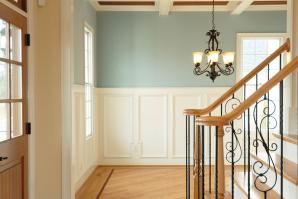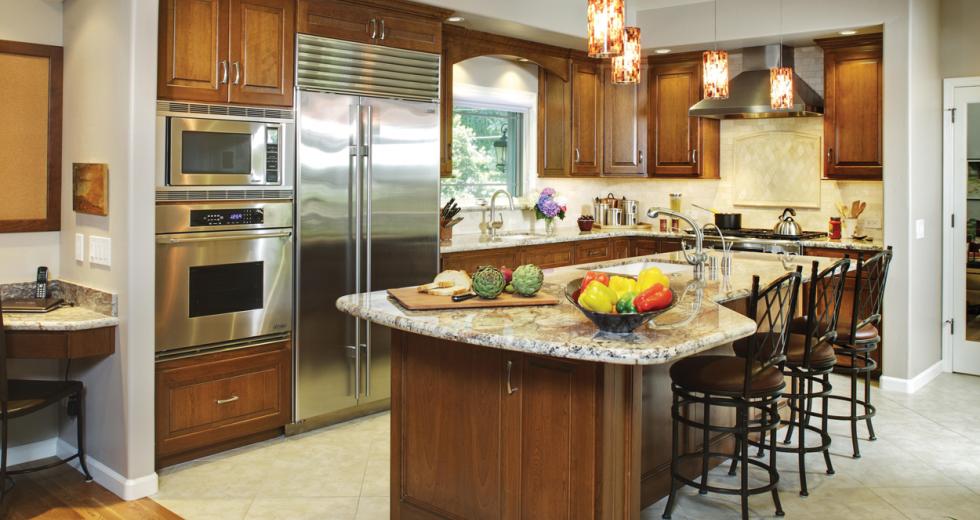After the worst recession in recent history crippled new home construction and forced almost one-fifth of homebuilders belly up, the future is finally looking brighter for contractors in 2013.
Driven by baby boomers remodeling their existing residences, home-improvement spending increased by 9 percent in 2012, a figure expected to reach double digits this year, according to the Joint Center for Housing Studies at Harvard University.
Christopher Long has been building homes in the Capital Region since 1997 and says his company, Christopher’s Construction, had its best year in 2011 as many older homeowners added on and retrofitted.
“[Homeowners] weren’t going to move, and their houses weren’t worth as much to sell so they reinvested in their house,” Long says. “If you invested in your house, it’s up in value just in the last four months. There is a steady spike upward.”
Indeed, home values are increasing at long last: The median home price in California hit its highest level since May 2008, according to a 2013 California Association of Realtors report. But with new home construction still flat and a shortage of available inventory in the marketplace, more people are choosing to stay put and modify their current residence rather than move or build.
John Higgins Construction specializes in building high-end homes in the $1 million to $2 million-plus range throughout California but hasn’t built a house since 2009. Owner John Higgins says that while he would prefer not to do the smaller remodels, those projects have kept him afloat through the famine.
“If I had to do 10 to 15 bathrooms or one house for the same dollar amount, I’d rather be doing a house than tearing out a bathroom,” Higgins says. “But in today’s market, that’s how we’ve been able to survive.”
Bathrooms and kitchens, which Higgins says typically run $15,000 to $40,000 in the mid- to upper-end remodels, add the most immediate value to a property relative to the investment. But while kitchen and bath remodels dominated the market during the recession, that trend is starting to change, says Eberle Remodeling President Kent Eberle.
“It boils all down to cost,” Eberle says. “People could add square footage much more inexpensively (during the recession) because the prices dropped so dramatically.”
Eberle estimates his business fell by 30 percent by late 2008 and the size and scope of projects decreased significantly, but his primary client base of 40- to 65-year-old homeowners sustained him with so-called “aging in place” projects — modifications such as widening doorways, adding barrier-free showers and opening up kitchen spaces to help both the property and its residents age gracefully.
“People are wanting more long-lived improvements because they want to stay in their homes and enjoy them more rather than polish them up to sell,” Eberle says. “If they’re going to have grandkids, they want and need the space to be able to entertain as well as have their family over. So great rooms, kitchens with the family room adjacent [and] opening up walls to other areas are still very popular.”
And unlike years past, when home expansion projects all but disappeared, full-blown add-ons are now making a resurgence.
“Adding a beautiful master bedroom/bathroom has always been a strong position,” Long says. “If you’re going from a 3 (bedroom)/2 (bathroom) to a 4/3, that’s a huge increase. … Those combinations add tremendous resale value.”
Long says more and more of his clients are finally diving into long-dreamed-about master bedroom retreats for themselves, and others are opting for full en suite additions to accommodate an extra family member. For a recent job on Arroyo Grande Drive, Long added a large addition for a family with special needs; and for a job on N Street, Long expanded a client’s house so the homeowner’s daughter and grandchild could move in.
But while expansion and renovation projects are keeping construction companies afloat, these businesses are still operating on thin margins. So to keep costs down for both the client and the builder, many contractors are turning to more affordable, longer-lasting materials, including synthetic composites that require less upkeep years down the road.
“Everything’s going more energy efficient, (and) anything that you can do to provide a product for your customer that’s maintenance-free is going to be an advantage,” says Wayne Steving, manager of Sacramento-area construction hub New Home Building Supply on Franklin Boulevard.
With new home construction finally beginning to move again and this uptick in increased spending for remodels, future growth will eventually be in the hands of younger homeowners who, along with recent immigrants, will come to supplant baby boomers as the dominant players in the housing market over the next decade.
Still, it could take a while for those demographics to get back in the game. From 2007 to 2011, home improvement spending dropped 29 percent among homeowners under 45 years old, according to Harvard’s Joint Center for Housing Studies.
“Our bottom hit, and it’s gonna start improving from here on out. There’s a demand for building,” Higgins says. “I can see it on the roads: A couple years ago, you didn’t see anything driving down the road. Now I see lumber trucks, I see concrete trucks, tractors. … People are finally starting to open up their wallets.”
Recommended For You

Rent the American Dream
Sacramento millennials aren't interested in mortgages
Brian Collins is a 26-year-old director of accounts at Sacramento-based mobile applications marketing firm Appency. He makes what he calls “decent money,” is putting lots of it into a 401(k) and has an eye on his financial future. And, like most people his age, he’s decided that buying a house is not part of the plan.

Commercial Lending Forecast
Softening standards with a chance of loans
This year could provide some of the first expansions in bank lending since 2008. So is the market back up to speed? No. But banks are slowly and smartly increasing their appetites for commercial lending, and the Capital Region will see its share of transactions.




Comments
Great article!